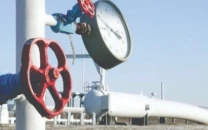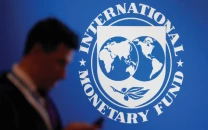Incentivising housing to lift economy
Govt does deserve to be applauded for successfully convincing the world to allow amnesty of sorts

Construction is one sector that has the unique potential to lift the economy of a country all alone. From laying the foundation to erecting the grey structure and then applying finishing touches, the material needed to construct a home or a building includes cement, sand, gravel, boulder, ceramic, iron, steel, wood, aluminum, marble, granite, paint, a range of electrical appliances, sanitary fittings, lock and keys, kitchenware, gardening products, as well as post-construction decorative items like furniture, curtains, carpets, wall hangings, etc. Thus, an assortment of dozens of industries, the construction sector can catalyse the economic growth in the country if paid proper attention to.
Wisely enough, the PTI government led by Prime Minister Imran Khan is paying the much-needed attention to the construction sector as part of its efforts to cure the perennially ill economy of the country, further infected by the reigning coronavirus pandemic. The PTI’s Naya Pakistan Housing Project, which features the construction of five million low-cost housing units over a period of five years, demonstrates the Prime Minister’s vision to enable the low-income groups in the country to afford their own homes; create a big number of job opportunities; and spur economic activity in construction-related industries — all in one fell swoop.
Just two months after assuming power, in October 2018 to be exact, the Prime Minister had taken the first step towards his ambitious initiative by announcing the Naya Pakistan Housing Authority — a one-window service to facilitate and regulate those interested in investing in the project, and help remove bottlenecks. The government then allocated land from time to time for the project in various towns and cities to of the country. And in a giant leap last Friday, the Prime Minister announced a subsidy of Rs30 billion for his flagship housing project, urging the construction industry and investors to ‘take advantage of the opportunity’.
This Rs30 billion subsidy, according to the announcement, will cater to the first hundred thousand houses to be constructed under the Naya Pakistan Housing Project — which means a subsidy of Rs0.3 million on each house. Those borrowing from the bank to construct their homes would get a subsidised interest rate of 5% for a 5 marla house and 7% for a 10 marla house. The State Bank of Pakistan and all other banks have been asked to set aside 5% of their portfolio for the construction industry which comes to about Rs330 billion.
To ease it further, the one-window operation, under the Naya Pakistan Housing Authority, has been launched in all four provinces. A National Coordination Committee on Housing, Construction and Development has also been set up to attend to the various obstacles. Taxes have been reduced in the provinces, and bottlenecks in the form of no-objection certificates have been cut down on. Besides, in a major incentive for investors, the government has decided not to question the source of investment, made until December 31. The government does deserve to be applauded for successfully convincing the international community to allow this amnesty of sorts in view of the country’s ailing economy.
The expensive bank loans — coupled with the cumbersome paper work, involving guarantees in particular — have thus far discouraged people in Pakistan to exercise the mortgage option to build or purchase home. Just 0.25% people in Pakistan obtain loans for the purpose while the same figure stands at 90% in Europe, 80% in the US and 30% in Malaysia. Even in India, it hovers around 10%. It is hoped that the steps taken by the incumbent government will provide impetus to the housing and construction sector which will, in turn, contribute towards the overall economic revival in the country.
Published in The Express Tribune, July 14th, 2020.
Like Opinion & Editorial on Facebook, follow @ETOpEd on Twitter to receive all updates on all our daily pieces.














COMMENTS
Comments are moderated and generally will be posted if they are on-topic and not abusive.
For more information, please see our Comments FAQ